History of Simpkins Hall and Western Academy/Western High School
The offices and classes of the Department of English are in Simpkins Hall, used as a laboratory school from 1938 to 1968.
In 2012, Dr. Rebekah Buchanan's classes created some oral histories of students who attended elementary or high school in Simpkins Hall.
Western Academy/Western High School also has an alumni group.
COFAC has Historical Photos of Simpkins and a Historical Timeline.
History of Simpkins Hall
Nicole Banks
The building that is now Simpkins Hall was built the same way that many great buildings are built—from a combination of a need and a dream. The Training School at Western opened in 1902, and it was housed with the Normal School in the Main Building (now Sherman Hall). The school had two primary functions: to allow college students to gain experience in the practice of teaching and to test the methods of teaching that were being taught in the Normal School.
As enrollment in both the Normal School and the Training School increased, the main building became too crowded. Walter P. Morgan, President of Western from 1912-1942, saw a need for Western to create a new building to house the training school. As with many dreams, Morgan’s vision of a new building took a long time to develop. After continual requests, denials, revisions, and postponements, Morgan’s stubbornness, hard work, and dedication paid off with appropriations and grants issued to create a new building.
The building was constructed between 1937 and 1938 after a federal grant was received to create a new training school building. The building was a welcome addition to Western Illinois University since Western was the only teacher’s college in the state without a separate training school. In this building, college students studying to be teachers could observe and instruct students without leaving campus.
The building was completed in time for excited students to occupy it during the 1938 school year. The New Training School was formally dedicated on May 26, 1939 in a ceremony attended by Hon. D.H. Kennicoft, Regional Director of PWA and Hon. Ross E. Noper, representing Gov. Henry Horner. President Morgan’s hard work and patience was rewarded by his ability to witness the construction and occupation of the building during his final years as the college’s President.
The Training School’s construction, under the Jacobson Brothers of Chicago, was important to many people in the Macomb area. Since it was built during the Great Depression, many area men were put to work on its construction. As cement was poured and walls were raised, families were able to buy food, clothing, and other things necessary for survival. The federally funded building was one of many Works Progress Administration projects of Roosevelt’s New Deal package that combined the needs of the community with the need for individual employment.
The rich architectural design and the elaborate detail oriented style of the outside of the building are proof of the government’s concern for employing men rather than conserving budgets. Mr. Bourton, the chief designer of the state architect’s office, said, “It is the most highly technical building I have ever designed for the state.” The building stands four stories tall, with the domineering presence of a classic, powerful facade. The entrance of the building presents three arched doorways that project out from the rest of the brick walls. Black, ornamental lanterns enclose all of the building’s doorways.
In addition to the enormous size and classic style of the outside of the building, there are also many finely detailed markings above doorways, below windows, and along the edge of the roof. On the west and east corners of the front of the building, four tablets with symbols on them are raised out of the cement above the third floor windows. Above each of the doors on the sides of the building, there is a sculpture with a sun, stars, chalice, and an open book centered above the doorway. Under many windows hang cement ribbons and flowers that seem to flow over the surrounding brick. The roof of the building is scalloped with ornate swirls, cement shells that protrude above the roofline, and gargoyle-like lion heads with beady eyes, sharp teeth, and long tongues sticking out.
When the first 299 young students ran through the entrance ways, pushed through the doors, and flopped down into new desks, they were becoming a part of a well planned system to provide the best education for both its young pupils and future teachers. The ground floor of the building housed the kindergarten and first grade along with the nurse’s office, school gymnasium, the lunch room, and classrooms for music and art. The first and second floors (the building uses the European method of floor numbering) were divided into educational units. On the first floor, the second, third, fourth, and fifth graders each studied in units containing three connecting rooms to hold pupils, Academy observers, and teachers. Administrative offices were also on this floor. The second floor, lined with green lockers, was set up in units like the floor below and served the needs of the sixth, seventh, and eighth graders. This floor also was home to the school’s auditorium and the elementary school library. The academy, high school library, and study hall occupied the fourth floor. In the first year 180 Academy students were able to observe, assist, and instruct in the beautiful and functional state-of-the-art Training School.
The detailed and solid construction of the building proved to be one of its problems when the Training School was adapted for use by WIU’s Department of English and Journalism in 1968. The intricate detail required special attention, the inside woodwork needed care, and the fixtures were built so permanently that it was difficult to tear down walls to remodel some of the classrooms. Dr. Robert Jacobs, the English department chairman, remarked that “When this building was constructed under the Federal Plan, it was as if they designed a battleship.”
As the battleship was converted in 1968 from a Training School to an English building, a number of unique problems had to be addressed. Cloak rooms and rows of green lockers were abandoned, taller chalk boards needed to be added, and and many child-sized features had to be made suitable for adults. The high school library eventually turned into the Writing Center, and the auditorium, gymnasium, and grade school library were adapted for use by the Theatre Department. Gradually the school began to fit the needs of college students. Throughout the difficulties, the college retained its sense of humor. When questioned by a reporter for the Western Courier about some of the problems with the renovations, Dr. Castle commented that “it had not been decided whether we will cut off the faculty member’s legs or raise the black boards on the first floor.”
In 1968 when the school was functioning as an English department building, Simpkins Hall received its name. Formerly referred to as the Training School or the Lab School, Simpkins was renamed for the former head of the Department of Education, Rupert R. Simpkins. A bronze plate with a portrait of Dr. Simpkins hangs in the entrance of the building and greets students and teachers as they enter the front doors. Although young students no longer race down the corridors of Simpkins Hall, the building still remembers them. In the first floor classrooms, wooden loud speakers, three-foot high chalkboards, and hidden cloakrooms with coat hooks that still reveal the last child’s name on masking tape serve as evidence of the building’s past.
The inside of Simpkins Hall also reflects the attention to detail and ornamentation that brings to life the outside of the building. The entrance way is full of arched windows that let sunlight flood in, oak woodwork, ornamental ironwork, and ceramic decorative sculptures. Even the old heating units are secretly tucked away behind gates of intricate circular designs. The combination of brick, wood, and cement of the majestic double staircase announces the important character of the building. Beautiful hanging light fixtures cascade from the ceiling- some, white orbital spheres with a blue disk of stars fixed around it; some, elongated boxes with a star in the center of intersecting lines along the surface. Plaster sculptures appear out of cement surfaces with ribbons and flowers that decorate the entrances to the ground floor.
Many of the classrooms exhibit a life of their own. Wooden and glass bookshelves and cabinets line the walls of most of the rooms. Two of the ground floor kindergarten classrooms have large bay windows with pew-like wooden seats under them. These same classrooms have colorful electric fireplaces with hearts, vines, and flowers in the ceramic tiles. Oak chair rails line the rooms, and the ceiling is framed with ornate plaster patterns. Where the ceiling meets the wall, a line of butterflies dance side by side around the room. Not far from this border, a large plaster frieze of birds, squirrels, butterflies, and flowers circles the ceiling. Doors that allowed the kindergarten students direct access to the outside have since been replaced by windows.
Today no bells ring at Simpkins Hall to announce the end of the day. The oak cabinets in the classrooms lie empty, cloakrooms deserted, and lockers abandoned. Instead of the laughter of young children and the loud warnings and reminders from teachers, now college students slam their books shut, round up their backpacks, and hurry out into the hallways. At the end of the day, the building, inspired by the dream of President Morgan, is left quietly holding its treasured memories and rich history.

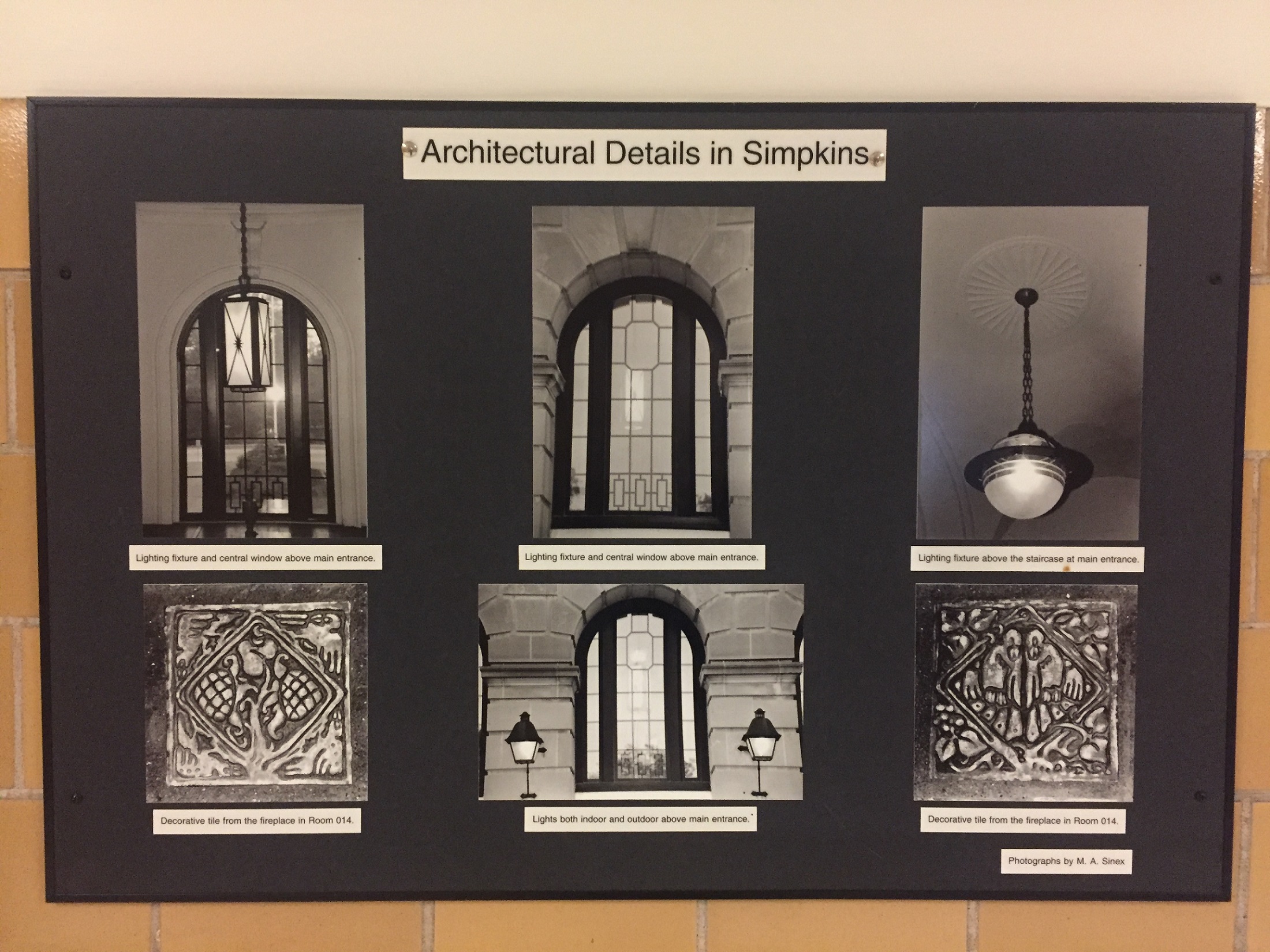
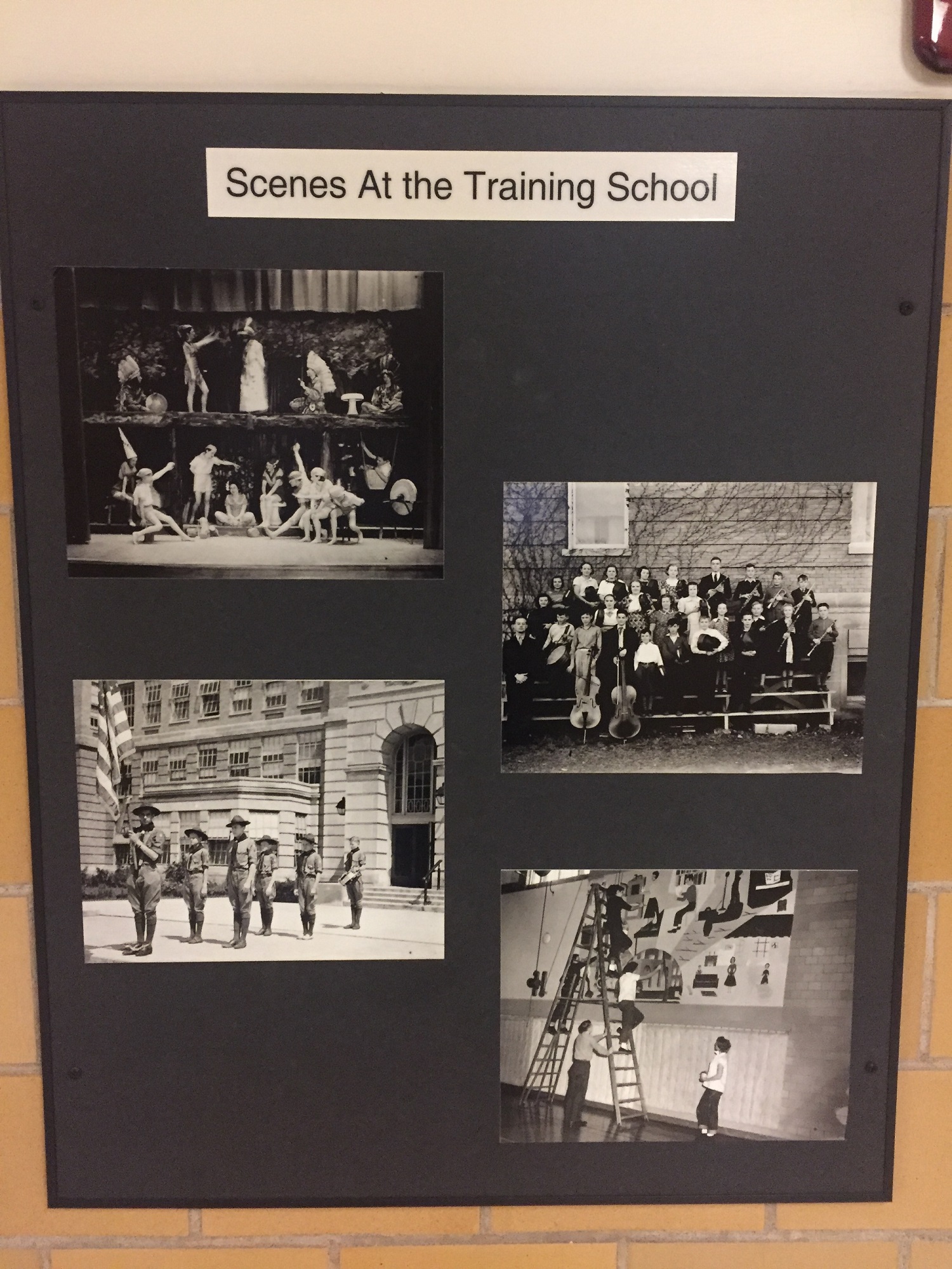
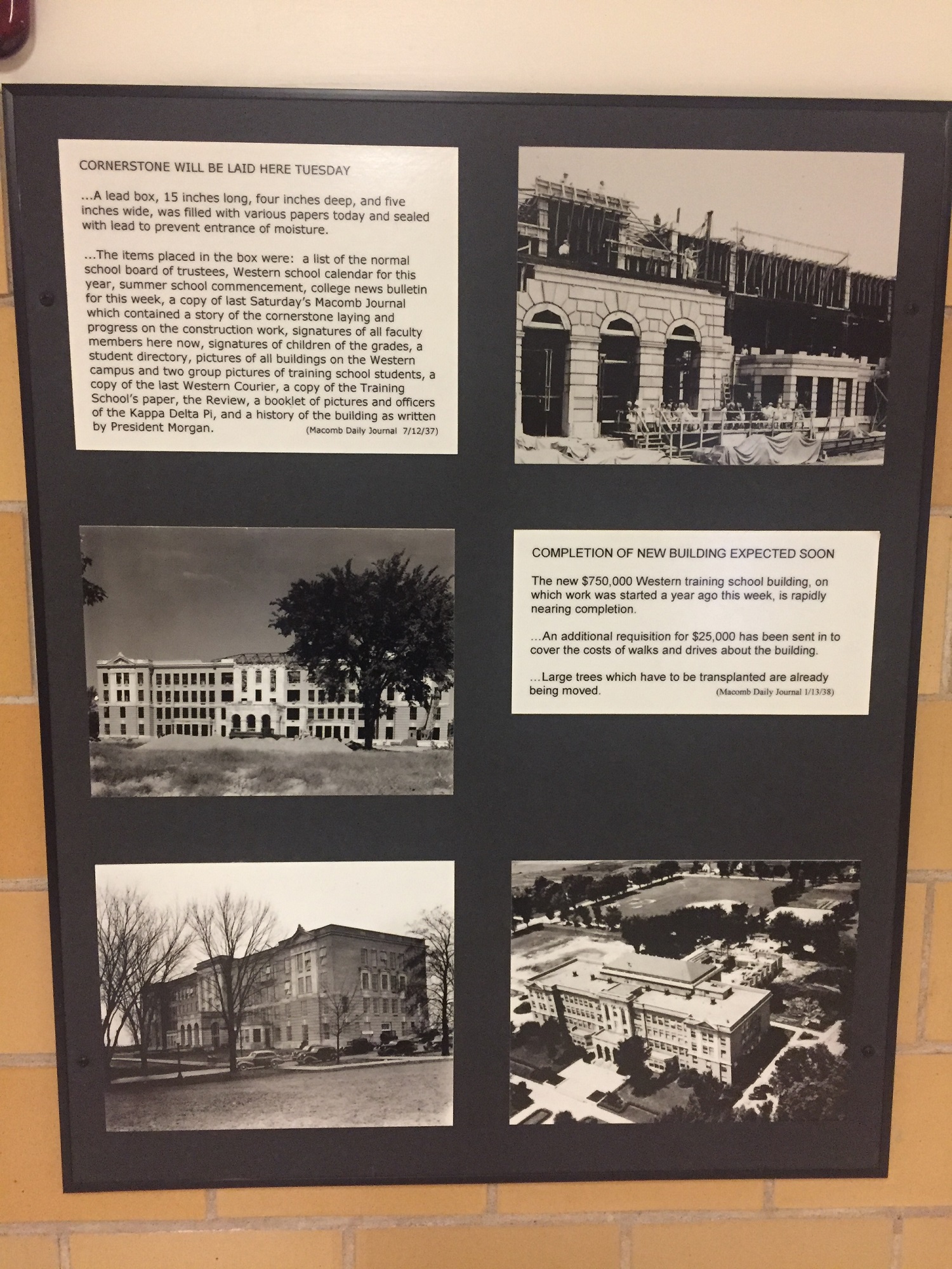
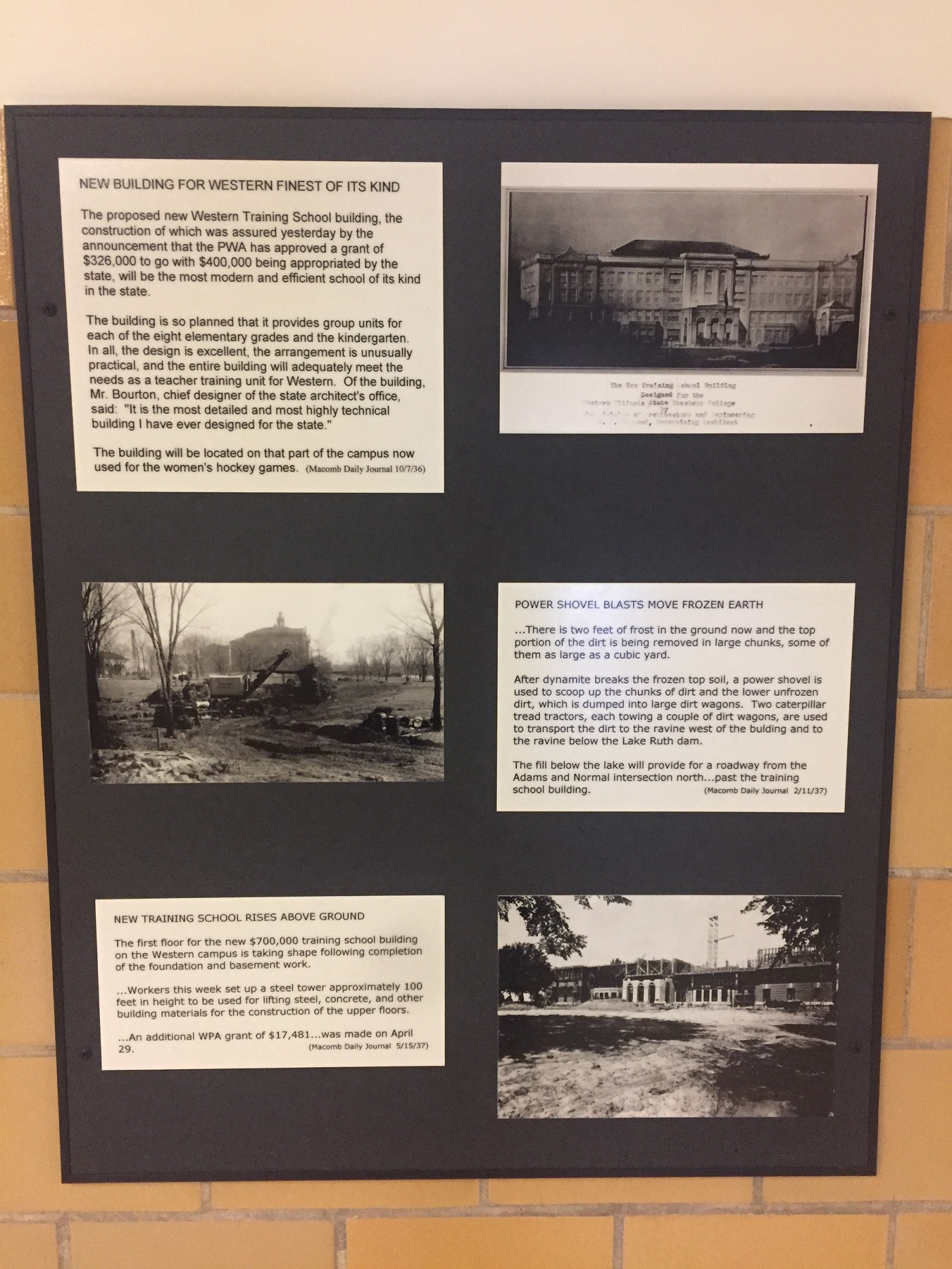
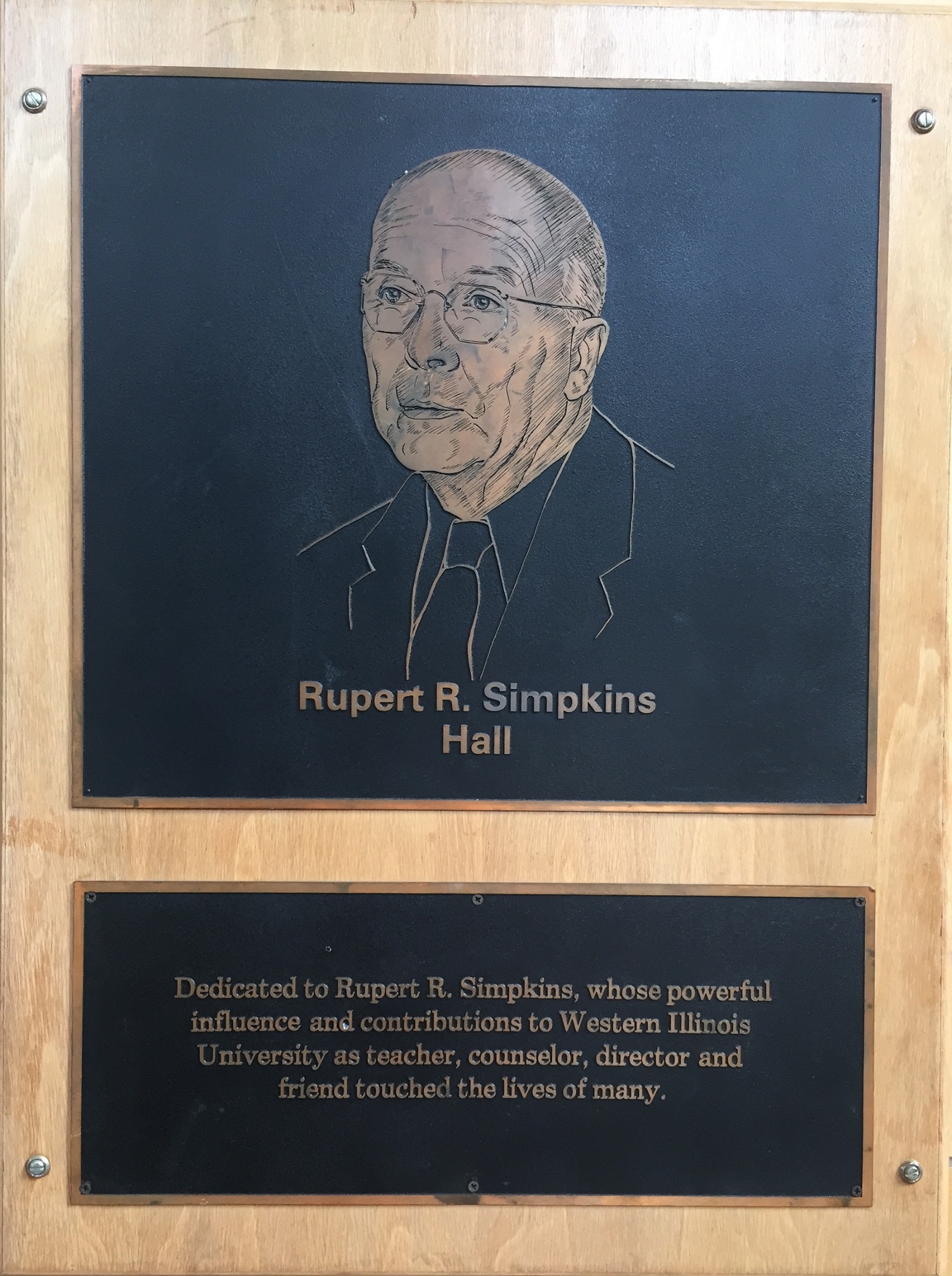
Connect with WIU: